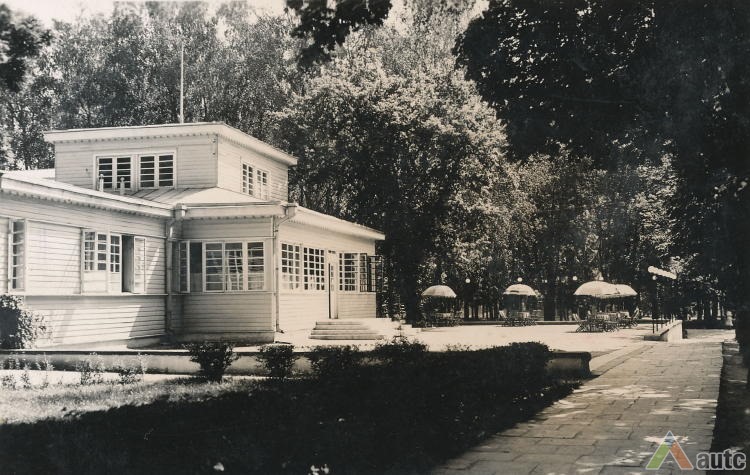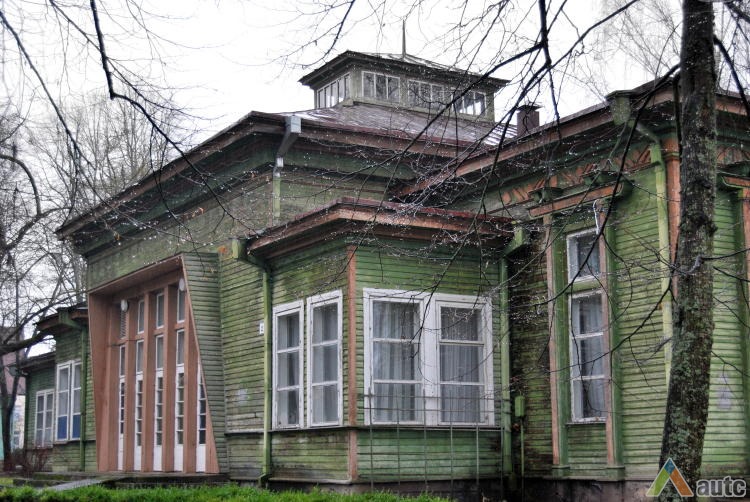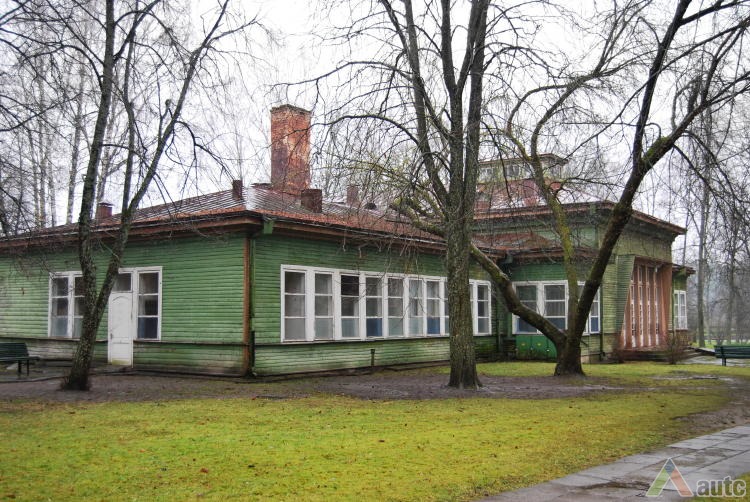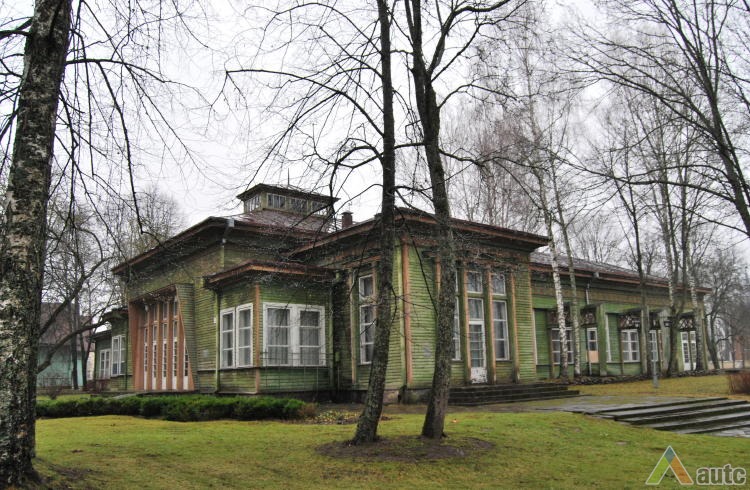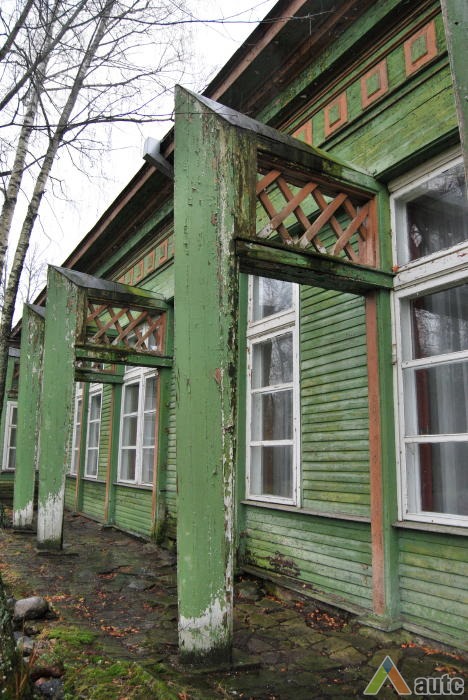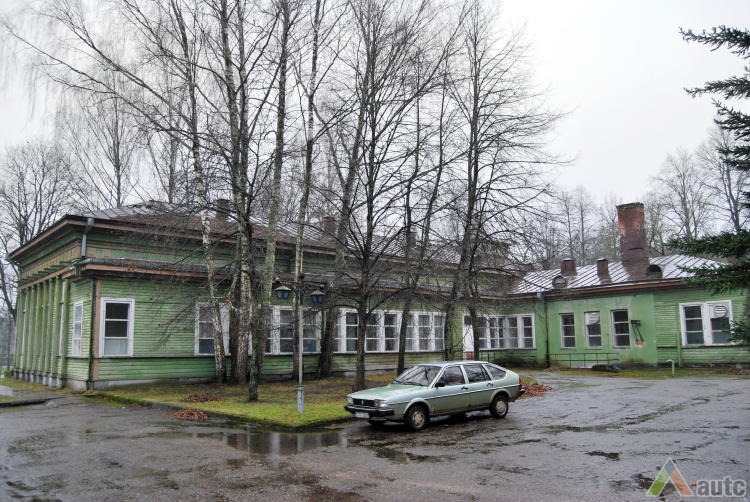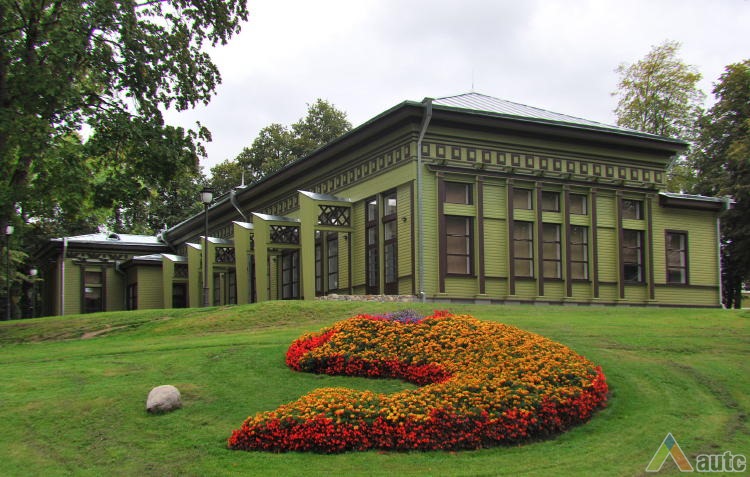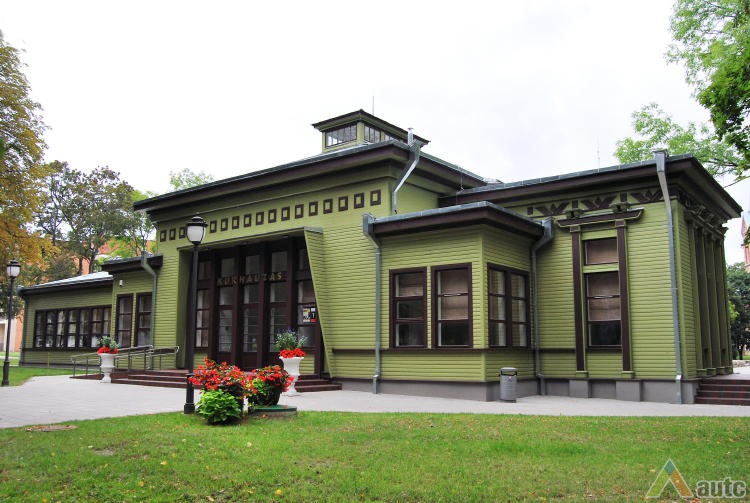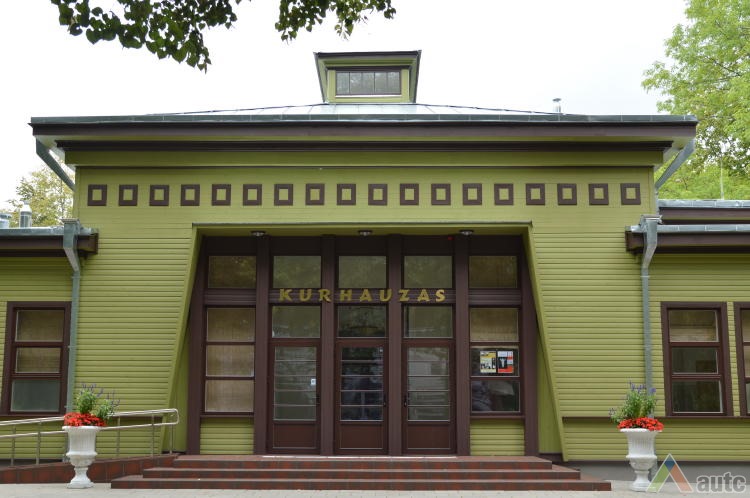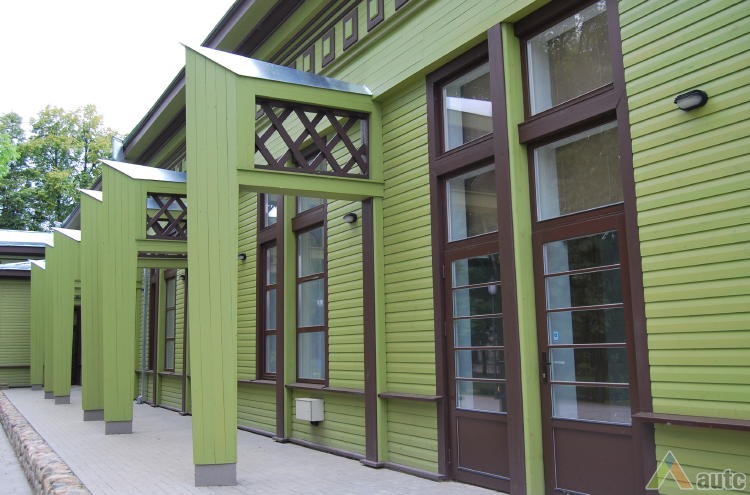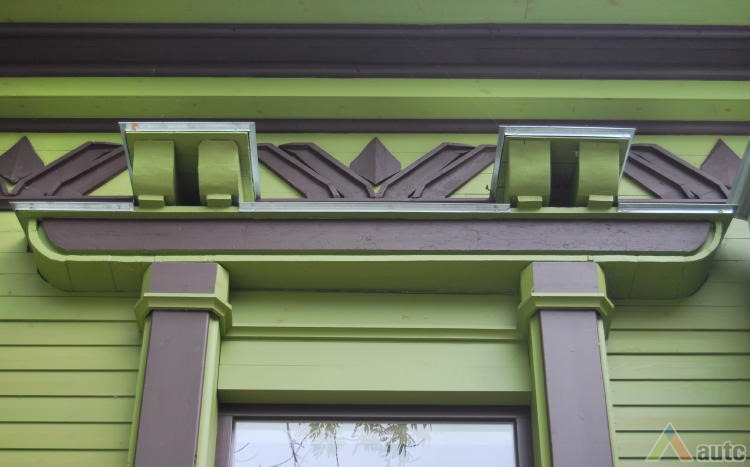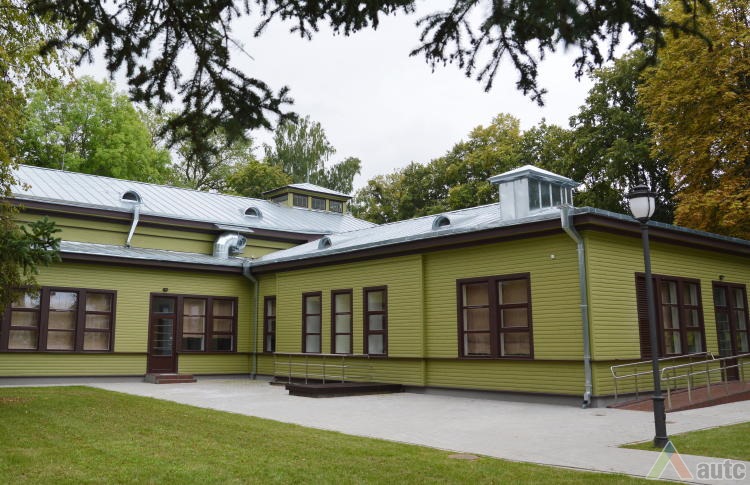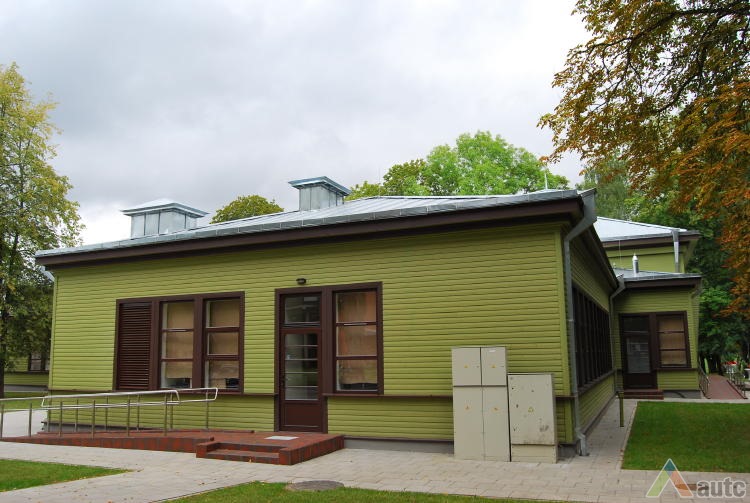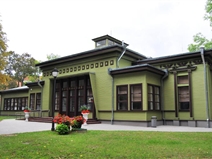

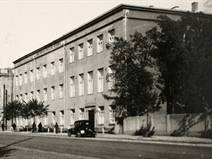
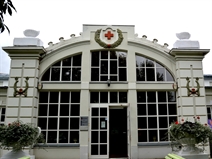
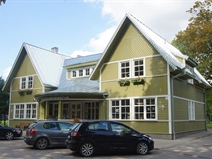

Until 1905 when Birštonas was managed by Kvinta, the resort had around 1 ha of land, mineral springs, bath houses (with seventy baths), three hotels, a laundry, eight summerhouses with all amenities, and a kurhaus for Sunday fun for city's guests. These archival sources mention resort's first kurhaus, first described by Vladislovas Sirokomlė in his travel notes.
As of 1923, the city was managed by doctor Jurgis Venckūnas. The first stage of Birštonas restoration included fixing kurhaus floor, windows, doors, installing balcony railings, and fixing the porch. During holidays the kurhaus used to hire the orchestra of the II regiment for several hours; it also had a new wooden stage built, its roof replaced, and its second-floor balcony and three porches rebuilt.
In 1924 Birštonas resort was transferred to Lithuanian Red Cross association which undertook to put into service, manage, and improve resort's property, land, mineral waters, buildings, etc., including taking care of kurhaus's modernization. In the late 20s, as the restructuring process was under way, the association torn down the kurhaus and built a new one in its place in 1931. On the same plot it also built a compact wooden mineral water pavilion with a high double-pitched roof.
In 1960, following the reconstruction of the kurhaus, its architectural expression changed slightly. Suspicions arise because of its portal frames and its side abutments which are unusual for such architecture and were likely added during the Soviet period. Building's authentic elements reveal that the kurhaus attempted to combine folk (evidenced by a profiled cornice) and modern (evidenced by turret windows and first-floor window rows) ideas which spread from the temporary capital Kaunas and influencing suburbs and resorts which had a very important mission during the inter-war period.
Viltė Migonytė
